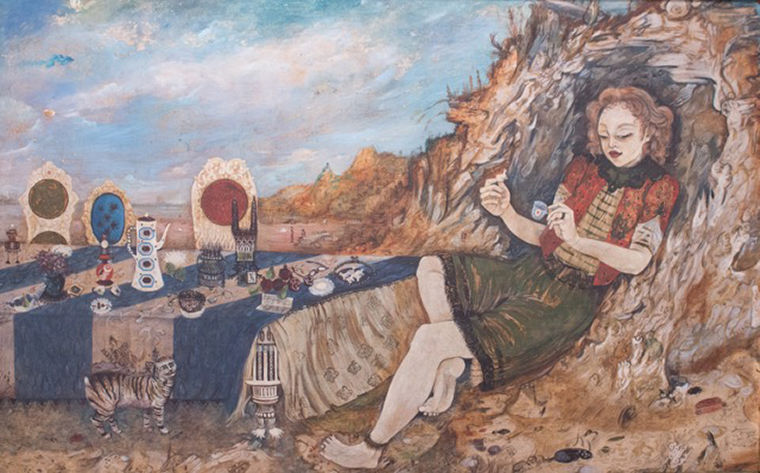New exhibit’s magic realism brings fantasy into reality
September 26, 2016
“Bats, Babes & Broccoli,” an art exhibit featuring the work of five postwar, Midwestern artists, provides Chicagoans a rare glimpse of magic realism, which combines realistic and surrealistic elements, while exploring themes of war, financial crisis and turmoil.
The show, which runs from Sept. 23 to Dec. 30, at the Mongerson Gallery, 875 N. Michigan Ave., features works by Wisconsin artists Sylvia Fein, Marshall Glasier, Dudley Huppler, Karl Priebe and John Wilde, according to the exhibit’s website. Although the artists were active art communities in Milwaukee and Madison, Wisconsin during the 1940s and later decades, they were connected to Chicago’s art community.
The exhibit continues the gallery’s interest in surrealism, which was the subject of a show in the gallery last year.
According to Robert Cozzolino, the curator of paintings at the Minneapolis Institute of Art, Midwestern cities’ art communities, unlike those of New York and Los Angeles, are often overlooked. Cozzolino is an author on Chicago art, and his essay is featured in the exhibit’s catalogue.
“It’s important for people to see these exciting, unusual and avant-garde ideas being picked up and played with in a personal way in places that aren’t the main metropolitan centers throughout the United States,” Cozzolino said.
Margot Mache, director of the Mongerson Gallery, said exhibits like “Bats, Babes, & Broccoli” are necessary to emphasize art created in the Midwest.
“There were these incredible micro-art movements happening here in the Midwest that haven’t fully received the attention other larger movements have,” she said.
There is no ambiguity surrounding the exhibit’s emphasis on Midwestern artists, but magic realism—and the artists’ messages—leaves some puzzled, according to Mache.
“There’s almost a mystery, a certain kind of darker tone, to the works that draws people in and makes them think,” Mache said.
In addition to the mystery behind the artists’ messages in the creative works, the definition of magic realism is shrouded in a veil of ambiguity. Part of this, Cozzolino explained, comes from the art form’s similarities to surrealism—another form exploring fantasy and reality.
“Magic realism doesn’t show the impossible, it shows the improbable,” Cozzolino said. “Often, it’s really subtle, [like a] kind of quality of the moonlight on a statue that seems really strange, but you can’t really account for why it’s strange.”
Sandra Zalman, an associate professor of art history at the University of Houston who specialized in the art style, said the form’s ambiguity is exactly what the artists are trying to convey.
“Magic realist paintings definitely have something to say about our culture and our society and about the irrationality of every day life,” Zalman said.
Anna Kunz, senior lecturer in the Art & Art History Department at Columbia, said in a Sept. 21 emailed statement that magical realism still has a place today.
“There is a freedom of feeling that happens when magical thinking collides with the mundane everyday. It speaks of possibility,” Kunz said.
In the same way that magical realism should be valued for small details, the nation’s art movements and their contributions to the art world can be found in the least obvious places, like in Wisconsin, according to Cozzolino.
“It reminds us we need to be paying attention to places that aren’t the center because, sometimes, something more exciting happens there,” Cozzolino said.








